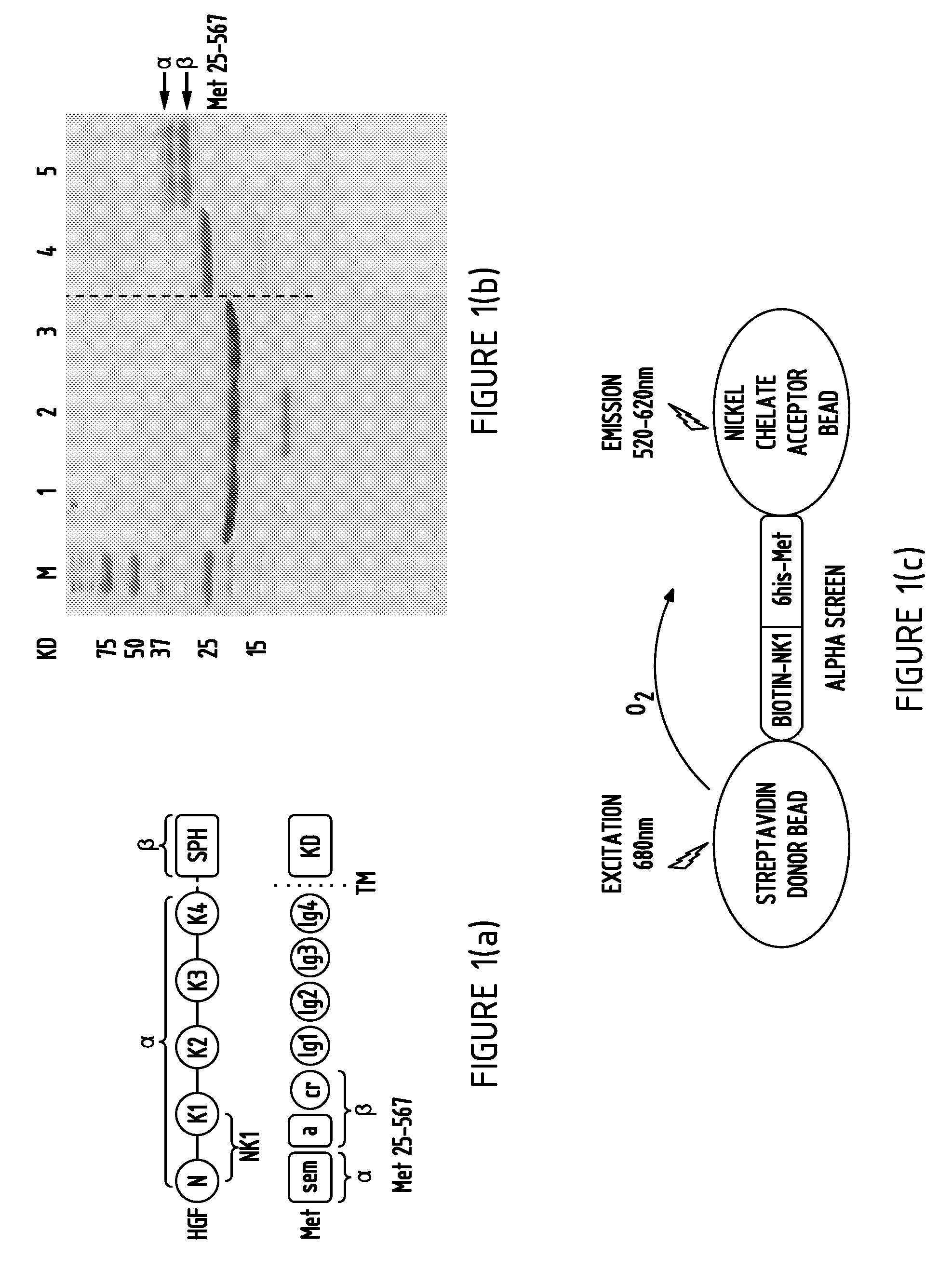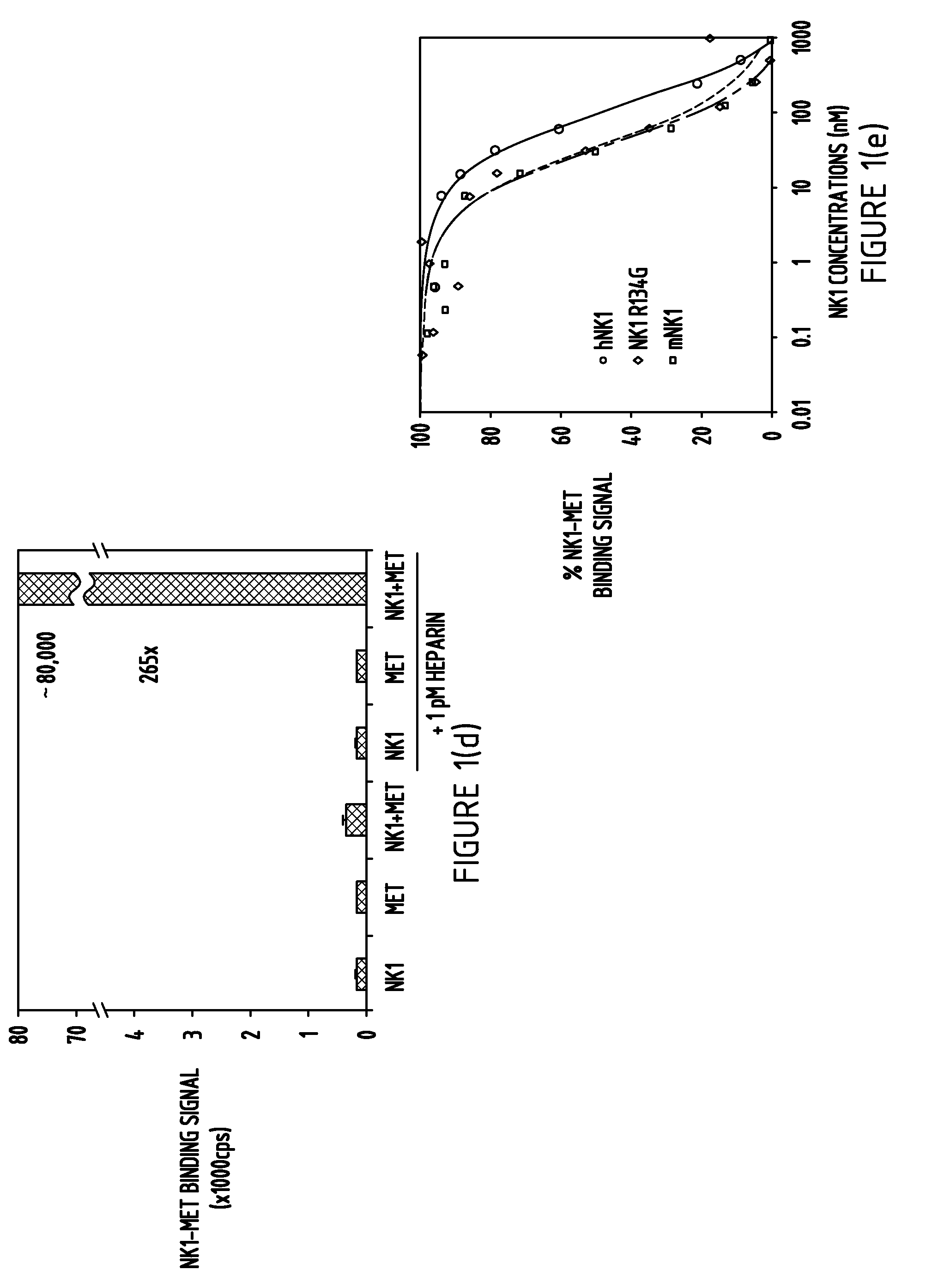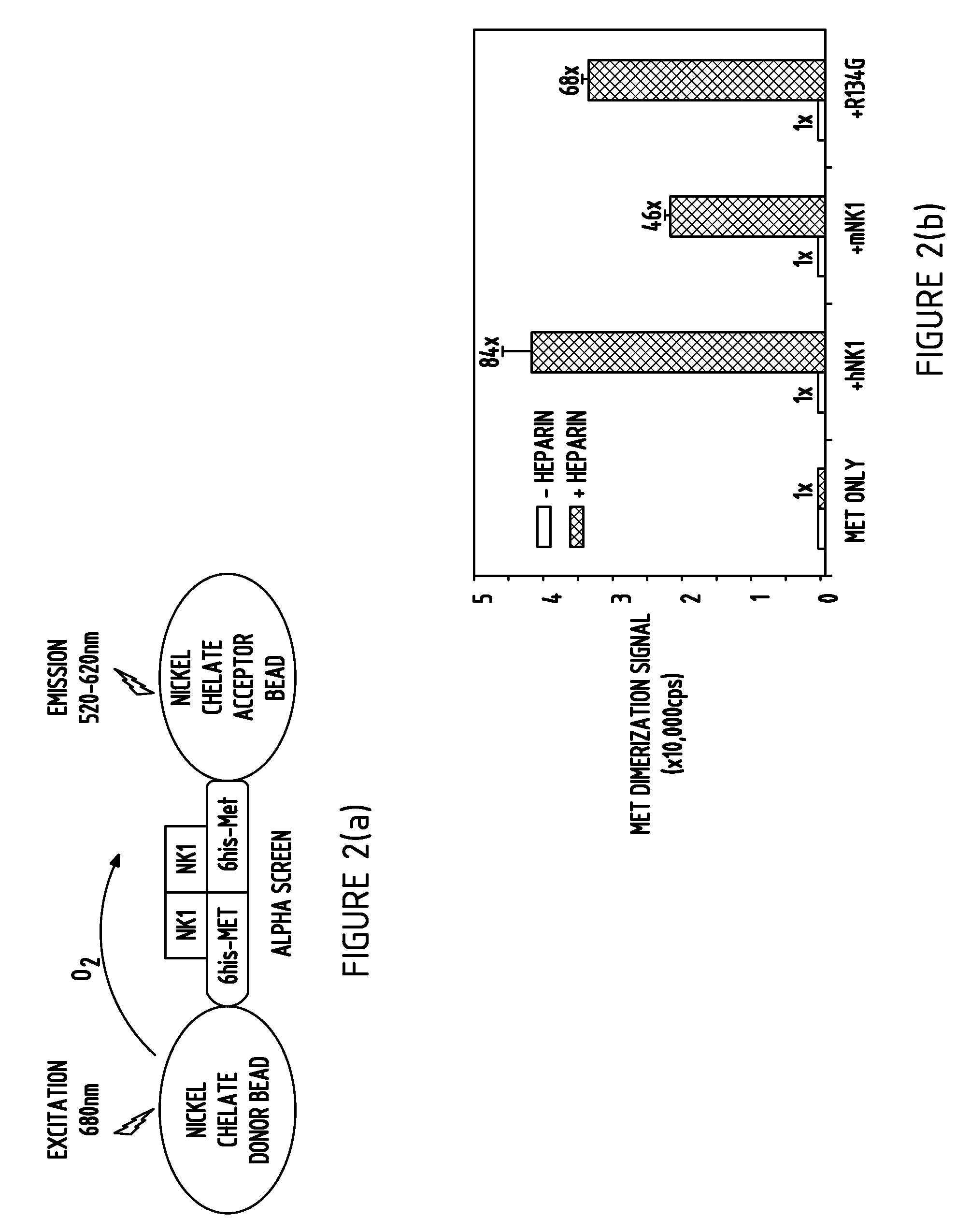Nk1-based polypeptides and related methods
a polypeptide and polypeptide technology, applied in the field of nk1-based polypeptides, can solve the problems of limited bioavailability and specificity of small molecule inhibitors, and the application limitations of applications
- Summary
- Abstract
- Description
- Claims
- Application Information
AI Technical Summary
Benefits of technology
Problems solved by technology
Method used
Image
Examples
example 1
Experimental Procedures for Examples 2-6
[0113]Production of NK1 Proteins
[0114]The human HGF NK1 (residues 28-209) was expressed as a 6×His-thioredoxin fusion protein from the expression vector pET-Duet1 (Novagen). The fusion protein contains a His6-Tag (MEHHHHHHMS) at the N terminus and a thrombin protease site between thioredoxin and NK1. Protein was expressed in the E. coli strain Rosetta / gami(DE) (Novagen) to promote disulfide bond formation. Bacterial cells transformed with the expression plasmid were grown in LB broth to an OD550 of ˜0.5 to 1.0 and induced with 100 μM isopropyl β-D-1-thiogalactopyranoside (IPTG) and 0.1% lactose for overnight at 22° C. Cells were harvested, resuspended in 200 ml extract buffer (495 mM NaCl, 25 mM Tris-HCl, pH 8.0, 5 mM imidazole, and 1 mg / ml lysozyme) per 12 liters of cells, and sonicated. The lysate was centrifuged at 20,000 rpm for 30 min, and the supernatant was loaded on to a 50 ml Ni-NTA agarose column. The column was washed with 500 ml ex...
example 2
Direct Binding of the Human and Mouse NK1 to the Met Extracellular Domain
[0132]To understand the detailed biochemical mechanisms of Met binding and activation by NK1, mouse and human NK1, the human NK1 mutant R134G, and the first 567 residues of the Met extracellular domain, which contains the sema and cystine-rich domains, were expressed and purified (FIG. 1A and Example 1). The purified Met extracellular domain (residues 25-567 with a C-terminal histidine tag) consists of a 35 KD α-chain (residues 25-307) and a 32 KD β-chain (residues 308-567) (Gherardi et al., 2003). Both mouse and human NK1 run at a 21 KD band but the human NK1 expressed in E. coli was consistently contaminated with an N-domain truncation product (lane 2, FIG. 1B) due to the presence of arginine 134 (R134) in the human NK1 that is sensitive to cleavage by proteases (Pediaditakis et al., 2002). Replacement of R134 with a glycine, the residue present in mouse NK1, removed the protease site (lane 3, FIG. 1B) and im...
example 3
Met Dimerization is Promoted by NK1 Binding
[0135]To probe the mechanism of Met activation by NK1, we designed a Met dimerization assay based on AlphaScreen technology (FIG. 2A). In this assay, both nickel chelate donor and acceptor beads were attached to Met via its C-terminal histidine tag. When Met formed an NK1-mediated dimer, the dimerization signal was recorded. As shown in FIG. 2B, the Met was monomeric regardless of the presence of heparin (40,000 photo counts. In the absence of heparin, NK1 only promotes a basal Met dimerization signal. Similar results were obtained with the mouse NK1 and the human R134G NK1. Furthermore, in a dose titration experiment (FIG. 2C), we found that NK1 induced Met dimerization with an effective concentration (EC50) ranging from 50 to 200 nM, which is closely related to the binding affinities of NK1 for Met from FIG. 1E. Together, these results suggest that NK1 is capable of binding and inducing Met dimerization in a heparin dependent manner.
[0136...
PUM
| Property | Measurement | Unit |
|---|---|---|
| Volume | aaaaa | aaaaa |
| Affinity | aaaaa | aaaaa |
Abstract
Description
Claims
Application Information
 Login to View More
Login to View More - R&D
- Intellectual Property
- Life Sciences
- Materials
- Tech Scout
- Unparalleled Data Quality
- Higher Quality Content
- 60% Fewer Hallucinations
Browse by: Latest US Patents, China's latest patents, Technical Efficacy Thesaurus, Application Domain, Technology Topic, Popular Technical Reports.
© 2025 PatSnap. All rights reserved.Legal|Privacy policy|Modern Slavery Act Transparency Statement|Sitemap|About US| Contact US: help@patsnap.com



